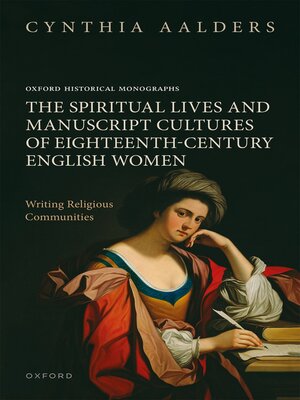The Spiritual Lives and Manuscript Cultures of Eighteenth-Century English Women
ebook ∣ Writing Religious Communities · Oxford Historical Monographs
By Cynthia Aalders

Sign up to save your library
With an OverDrive account, you can save your favorite libraries for at-a-glance information about availability. Find out more about OverDrive accounts.
Find this title in Libby, the library reading app by OverDrive.



Search for a digital library with this title
Title found at these libraries:
| Library Name | Distance |
|---|---|
| Loading... |
The Spiritual Lives and Manuscript Cultures of Eighteenth-Century English Women explores the vital and unexplored ways in which women's life writings acted to undergird, guide, and indeed shape religious communities. Through an exploration of various significant but understudied personal relationships- including mentorship by older women, spiritual friendship, and care for nonbiological children-the book demonstrates the multiple ways in which women were active in writing religious communities. The women discussed here belonged to communities that habitually communicated through personal writing. At the same time, their acts of writing were creative acts, powerful to build and shape religious communities: these women wrote religious community. The book consists of a series of interweaving case studies and focuses on Catherine Talbot (1721-70), Anne Steele (1717-78), and Ann Bolton (1743-1822), and on their literary interactions with friends and family. Considered together, these subjects and sources allow comparison across denomination, for Talbot was Anglican, Steele a Baptist, and Bolton a Methodist. Further, it considers women's life writings as spiritual legacy, as manuscripts were preserved by female friends and family members and continued to function in religious communities after the death of their authors. Various strands of enquiry weave through the book: questions of gender and religion, themselves inflected by denomination; themes related to life writings and manuscript cultures; and the interplay between the writer as individual and her relationships and communal affiliations. The result is a variegated and highly textured account of eighteenth-century women's spiritual and writing lives.







